By Jnanendra Das
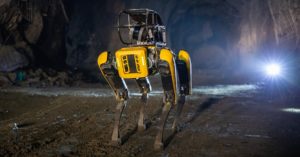 When God said, “Let there be light,” He surely didn’t mean even through the night. Yet today, that’s becoming a possibility. Just as your parents might have consoled you after the loss of a beloved pet by saying they became a star, even that comforting thought is now a reality. Driving through Byrnihat may make you want to roll up your windows, but beyond government initiatives and public efforts, you can also breathe easy if you’ve got your own fresh air in a portable can.
When God said, “Let there be light,” He surely didn’t mean even through the night. Yet today, that’s becoming a possibility. Just as your parents might have consoled you after the loss of a beloved pet by saying they became a star, even that comforting thought is now a reality. Driving through Byrnihat may make you want to roll up your windows, but beyond government initiatives and public efforts, you can also breathe easy if you’ve got your own fresh air in a portable can.
On this Engineer’s Day, Sunday Shillong celebrates the remarkable achievements brought to life by engineers and innovative minds. From ingenious ‘jugaad’ technology and writing romcoms to cracking the toughest exams, engineers have made their mark in every field. This feature explores extraordinary ideas, ranging from the truly “out of this world” to innovations that empower people to overcome their disabilities.
Reflect Orbital
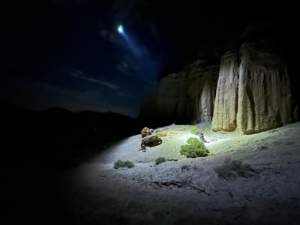 A major limitation for solar farms has always been their reliance on daylight. To address this, California-based startup Reflect Orbital proposes using reflective satellite-mounted mirrors in space to direct sunlight onto solar farms at night, brightening the sky within a 5-kilometre radius. While the idea dates back to the 1970s, it gained attention in 1988 with Russia’s Znamya Project, which successfully deployed a 65-foot mirror in orbit, casting a roving beam of light over Europe. Similar attempts have been made in Norway and China.
A major limitation for solar farms has always been their reliance on daylight. To address this, California-based startup Reflect Orbital proposes using reflective satellite-mounted mirrors in space to direct sunlight onto solar farms at night, brightening the sky within a 5-kilometre radius. While the idea dates back to the 1970s, it gained attention in 1988 with Russia’s Znamya Project, which successfully deployed a 65-foot mirror in orbit, casting a roving beam of light over Europe. Similar attempts have been made in Norway and China.
Reflect Orbital’s 26-year-old CEO, Ben Nowack, aims to revive the concept with modern technology at 90% lower costs than previous models. The company plans to deliver reflected sunlight by Q4 2025, offering bursts of light lasting 4 minutes across a 5-kilometre area. What once seemed a distant possibility, transforming night into day, could soon become as simple as launching an app and selecting a location on the map.
Celestis
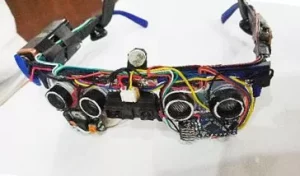 How do you want to remember your loved ones after they’re gone? As a child, you might have heard that they become stars. Now, that sentiment can become a reality. Houston-based company Celestis offers a unique memorial service—launching cremated human remains into deep space. Since 1992, they’ve been sending spacecraft on journeys that start by orbiting Earth, moving to the moon, and eventually venturing into the depths of space.
How do you want to remember your loved ones after they’re gone? As a child, you might have heard that they become stars. Now, that sentiment can become a reality. Houston-based company Celestis offers a unique memorial service—launching cremated human remains into deep space. Since 1992, they’ve been sending spacecraft on journeys that start by orbiting Earth, moving to the moon, and eventually venturing into the depths of space.
To honour and remember their loved ones, clients can track their spaceflights in real-time. While it may sound like science fiction, Celestis has made this futuristic vision a reality, helping families celebrate those who’ve passed away. This year alone, they launched three spaceflights and have two more planned for 2025.
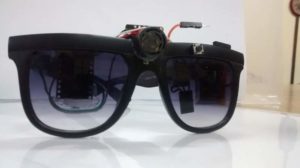 After decades in the memorial business, Celestis now also offers the option to send DNA samples into space. Once a luxury reserved for billionaires, anyone can now launch their biological signature into the cosmos. As their website says, “Fly as one or with family and friends on a personal voyage among the stars.”
After decades in the memorial business, Celestis now also offers the option to send DNA samples into space. Once a luxury reserved for billionaires, anyone can now launch their biological signature into the cosmos. As their website says, “Fly as one or with family and friends on a personal voyage among the stars.”
Bottled Fresh Air
Tired of breathing in the polluted air of your city? If you think the air quality isn’t up to your standards, you can now get “Pure Himalayan Fresh Air”—yes, air in a can. This isn’t a medical oxygen tank but actual pressurised cans filled with fresh air, originally started as a joke in ziplock bags from Canada. The idea has now caught on, with multiple brands selling cans filled with “nothing” but pure Himalayan air. These 10-litre cans offer around 160 bursts of fresh air.
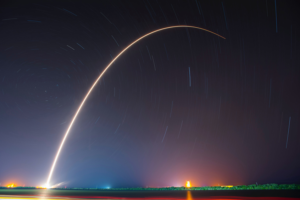 This might sound like a laughing stock at first, but India being the 3rd most polluted country in the world, as per an IQAir report and 42 cities in the top 50 polluted cities in India, makes the market for such a technology. Just as our grandparents mocked the idea of bottled water, canned air is becoming popular in cities plagued by pollution, like Beijing, where residents buy imported cans of oxygen from the Himalayas and Canada.
This might sound like a laughing stock at first, but India being the 3rd most polluted country in the world, as per an IQAir report and 42 cities in the top 50 polluted cities in India, makes the market for such a technology. Just as our grandparents mocked the idea of bottled water, canned air is becoming popular in cities plagued by pollution, like Beijing, where residents buy imported cans of oxygen from the Himalayas and Canada.
Spot: The Robot Dog
For centuries, dogs have been humanity’s loyal “best friend,” serving alongside us in everything from being the first living being to space, to detecting explosives and narcotics. But how far should we risk their lives? Enter Spot, a nimble, four-legged robot developed by Boston Dynamics in 2016, designed to take on dangerous tasks that might otherwise put dogs or humans in harm’s way. Since its creation, Spot has continuously evolved, becoming a versatile tool used in a variety of industries.
From factory floors and construction sites to fire departments and research labs, Spot is helping teams gain valuable insights into daily operations, site conditions, and hazardous environments. These robots are already working in the real world, tackling challenges in places like defunct nuclear power plants such as Fukushima, ancient ruins like Pompeii, deep mines, and more. Spot is simple, reliable, scalable, and built to take on the toughest jobs—allowing humans (and dogs) to stay safe while getting the work done.
G4B: Intelligent Goggles for Blind
Anang Tadar was just an 11th-grade student when inspiration struck, leading him to create the prototype for his groundbreaking “Goggles for the Blind.” The young innovator from Arunachal Pradesh came up with the idea after helping a blind woman with directions. Tadar realised that since visually impaired people often wear glasses to cover their eyes, these could be enhanced with technology to help them navigate. While smart walking sticks are available to detect obstacles on the ground, he noticed there was nothing to detect objects at waist level or above.
Inspired by the navigation system used by bats—who emit ultrasonic sounds and detect obstacles based on the echo—Tadar incorporated a similar mechanism into his smart goggles. His design includes ultrasonic transmitters, receivers, and a microprocessor. When a visually impaired person wears these goggles, they detect obstacles ahead and provide vibration alerts on the side of the obstruction (left, right, or centre). The closer the user gets to the obstacle, the stronger the vibration. These goggles are designed to complement, not replace, traditional walking sticks.
In recognition of his innovation, Anang was invited to the UNICEF-supported Children’s Creativity Camp in Delhi in 2017. His invention offers a promising solution to enhance mobility for the visually impaired.
As we celebrate Engineer’s Day, these remarkable inventions remind us that the boundary between science fiction and reality is growing ever thinner. From harnessing sunlight in the dead of night to sending our legacy into the cosmos, engineers continue to push the limits of what’s possible. In a world where even fresh air can be bottled and robot dogs save lives, it’s clear that innovation knows no bounds. With each breakthrough, we’re not just solving today’s problems—we’re engineering the future, one ingenious idea at a time.



